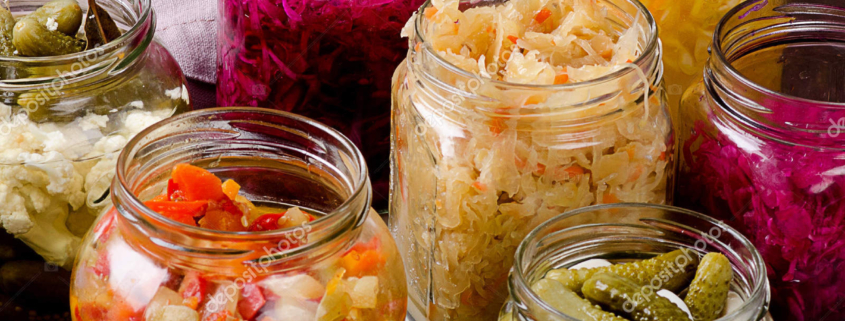10 Easy Ways to Get Probiotics on a Plant-based Diet
It takes a certain sort of nutritionally interested person to consider where they are getting their probiotics, let alone know what it is probiotics are and do. Nonetheless, it is something we should pay attention to, especially if you are eating a predominantly plant-based diet (as with many things, the most well-known probiotics come from dairy). So, first, let’s get a little purchase on what it is we are talking about.
Probiotics are what is often referred to as “good bacteria,” most regularly attributed to yogurt. These good bacteria go by unfamiliar names like lactobacillus, one of the more infamous strains that has been the source of major vegan debate (which we won’t be getting into here). Probiotics are something everyone should get a healthy dose of as it helps to clean some of the mess modern living has made of our insides. Advertisement
The point of making sure we consume probiotics is that the bacteria, while aurally unappetizing, are instrumental in keeping our gut in harmony. They help us break down food, combat variously embarrassing and unhealthy digestive issues, and wage a behind-the-scenes battle with other, less altruistic microbes that may cause infections.
Popular dairy products — yogurt, milk, soft cheeses and kefir — are the most recognized sources of probiotics, but that isn’t at all to say that there aren’t plenty of vegan options. For those of us not keen to the milky way, fermentation is the name of the game. Believe or not, you are probably already eating plenty of fermented things, and the rest of the following list — some weirdly delicious and funky choices— will be worth giving a shot.
1. Sauerkraut
Long thought to be just a condiment for bratwurst, sauerkraut is actually a great side dish, as well as a plucky addition to sandwiches, such as the Reuben. What’s more: it’s a probiotic power source. Be sure to get unpasteurized (or make your own) when possible as pasteurization kills some of the good stuff. Advertisement
2. Kimchi
The ubiquitous side dish for every meal any time of day in Korea. Kimchi is a spicy, fermented cabbage with loads of health benefits, including probiotics, lots of vitamins, and antioxidants. Most kimchi is made with seafood added, but it’s easy enough to make your own. Then, try out this wicked kimchi fried rice ball recipe.
3. Miso
Also full of antioxidants and B-vitamins, miso soup, the Japanese staple, is reported to have as many as 160 different bacteria strains, many of which will work wonders for the stomach. But, miso isn’t just for traditional dishes. There are loads of recipes that include miso and all of the health benefits it comes with. Advertisement
4. Tempeh
Tofu is more widely used that tempeh, but that’s not to say it’s better, for your health or taste buds. Tempeh, an Indonesian dish of fermented soybeans, has a firmer texture than tofu as well as the probiotic benefits derived from the fermentation process. And, it’s getting easier and easier to find in stores and on restaurant menus. Start with these recipes and/or try making your own.
5. Sourdough Bread
That’s right, the San Francisco treat. Do it as a bread bowl with soup inside, use it for a sandwich or just have it by the hunk — sourdough bread is probiotic-friendly. Apparently, all that effort to save the starter not only pays off with taste but also via usefully nutritious bacteria. For those worried about bread being bad, fear not, sourdough is different. Try it as a stuffing or pretzel. Advertisement
6. Sour Pickles
A great snack, a great addition to sandwiches and a great source of probiotics — dill and sour pickles are easy to come by and likely something that already features in most folks’ diet. In order to get the full bacterial benefit, seek out varieties that are naturally fermented in sea salt and water as opposed to all-out vinegar. Or, you could make them yourself.
7. Olives
Continuing on in our briny waters, olives can also be a great fix for your innards. The key here, as with any pickled product really, is that the briny solution fosters the growth of good bacteria. In turn, we are afforded some really tasty snacks, available on pizza, in salads, or in full-on tart form.
8. Soy/Nut Milk
Hey, dairy milk isn’t the only probiotic milk out there, and just because lactobacilli begins “lacto” doesn’t mean it can’t be found elsewhere. Soy and nut milk already naturally have some probiotics, and new products are being made with active cultures added to them. So, remember, even though soy’s name has been tarnished of late, it’s not the plant’s fault but rather what has been done to it.
9. Kombucha & Kefir
The superstar of fermented healthy stuff, kombucha has re-blasted onto the scene in the last decade. Kombucha knows detoxification, has active enzymes, antioxidants, amino acids, and probiotics, too. Over 2000 years in the making, there’s not much this tea can’t do. It’s available at most good coffee shops these days — or can be made at home. Advertisement
10. Supplements
Probiotics from food are probably the best option, but should these foods not appeal to you or none of them be readily found in, say, Timbuktu, there are supplements available. As for me, I always try to look to supplements as a last resort; nonetheless, it’s comforting to know there are viable vegan options out there if the situation ever arises.
With all of these choices, you’ve got plenty of places to get your probiotic needs! What are your favorite sources of probiotic plant-based goodness?

 no
no
 no
no no
no